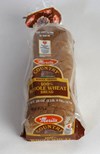A University of Illinois study suggests avoiding cooking methods that produce the kind of crusty bits you’d find on a grilled hamburger, especially if you have diabetes and know you’re at increased risk for cardiovascular disease because of your diagnosis.
Posted 11/2/2012 by www.extension.org

Posted 11/2/2012

According to the Academy of Nutrition and Dietetics, “There is no one diet for all people with diabetes. There is, however, a ‘recipe’ for eating healthfully that is similar to recommendations for heart health, cancer prevention and weight management.
To successfully manage diabetes, you need to understand how foods and nutrition affect your body. Food portions and food choices are important. Carbohydrates, fat and protein need to be balanced to ensure blood sugar levels stay as stable as possible.
Posted 10/27/2012 by http://www.fruitsandveggiesmorematters.org

Offering better-for-you treats during Halloween
Halloween is a time of fun and excitement for kids who will be picking up sweet treats from door-to-door candy collecting. Luckily, having a spectacular Halloween doesn’t have to mean calorie overload for your kids.
Offer trick-or-treaters a different kind of sweet treat – nature’s own “candy” – fruits and veggies of course!
Posted 10/26/2012 by www.fightbac.org

Halloween Food Safety How-To
BAC! (foodborne bacteria) will creep up on you if you let foods sit out for too long.
Don’t leave perishable goodies out for more than two hours at room temperature (1 hour in temperatures above 90°F).
Beware of spooky cider!
Unpasteurized juice or cider can contain harmful bacteria such as E.coli O157:H7 and Salmonella. Serve pasteurized products at your Halloween party.
Scare BAC! away by keeping all perishable foods chilled until serving time.
Cold temperatures help keep most frightful bacteria from multiplying. To keep store-bought party trays cold, fill lids with ice and place trays on top. Similarly, keep salads and other perishable items in bowls cold by nesting them in larger bowls of ice.
When whipping up Halloween treats, don’t taste dough and batters that contain uncooked eggs!
Try a new spin on bobbing for apples. Cut out lots of apples from red construction paper. Write activities for kids to do on each apple, such as “say ABCs” or “do 5 jumping jacks”. Place a paper clip on each apple and put them in a large basket. Tie a magnet to a string or create a fishing pole with a dowel rod, magnet and yarn. Let the children take turn “bobbing” with their magnet and doing the activity written on their apple. Give children a fresh apple for participating in your food-safe version of bobbing for apples.
Source: www.fightbac.org
Posted 10/21/2012 by www.fruitsandveggiesmorematters.org

Apples are delicious, easy to carry for snacking, low in calories, and a natural mouth freshener. There are hundreds of varieties of apples on the market today, although most people have only tasted one or two of the most popular such as Red Delicious or Granny Smith. Apples can be sweet, tart, soft and smooth or crisp and crunchy, depending on the one you choose. There is an apple to suit almost everyone's taste, so why not choose one. Have an apple today!
Posted 10/21/2012 by www.extension.org

Eating an apple a day might in fact help keep the cardiologist away, new research suggests.
In a study of healthy, middle-aged adults, consumption of one apple a day for four weeks lowered by 40 percent blood levels of a substance linked to hardening of the arteries.
Taking capsules containing polyphenols, a type of antioxidant found in apples, had a similar, but not as large, effect.
The study, funded by an apple industry group, found that the apples lowered blood levels of oxidized LDL -- low-density lipoprotein, the "bad" cholesterol. When LDL cholesterol interacts with free radicals to become oxidized, the cholesterol is more likely to promote inflammation and can cause tissue damage.
Posted 10/14/2012 by United States Bone and Joint Initiative

October 12- 20 is Bone and Joint Health National Awareness Week.
Osteoporosis is a progressive medical condition in which the bone becomes thinner than normal, and weakens. As a result, bones break easily even with something as simple as a fall. According to the U.S. Surgeon General's Report on Bone Health and Osteoporosis, if Americans don't take action, by the year 2020, half of all persons older than age 50 will be at risk for fractures related to osteoporosis and low-bone mass.
Until a few years ago was considered "old people's" diseases. Today we know differently. Steps to improve bone health start at an early age. Weak bones can affect individuals of all ages.
Posted 10/14/2012 by National Osteoporosis Foundation

Certain foods can affect your bones. Learning about these foods can help you make healthier food choices every day. Here are some examples of foods that are rich in calcium, vitamin D and other nutrients that appear to be important for bone health and overall health.
Posted 10/1/2012 by Centers for Disease Control and Prevention

You eat in a variety of places - your home, work, restaurants, maybe even your car. For some of these places, you have more control over what choices are available than others. Since high-calorie foods are everywhere, it's important to take the time to plan ahead to make sure you have healthy options available.
Posted 9/26/2012 by www.extension.org

September is whole grains month. The 2010 Dietary Guidelines recommend that we try to make half of our grain choices be whole grains. The grains food group includes: wheat, rice, buckwheat, bulgur (cracked wheat), oats, popcorn, quinoa, barley, cornmeal, rye and others.
Whole grains lose 25% of their protein along with 17 other nutrients when they’re refined. Even if refined grain products have been enriched by adding some vitamins and minerals, they are not as healthy as whole grains. Experts recommend that whole grains make up at least half the grains we consume. Researchers have shown that whole grains lower your risk for diabetes, heart disease, cancer, stroke, and obesity.
Whole grains are not hard to find once you know a few simple facts.
| Previous Articles | More Articles |






